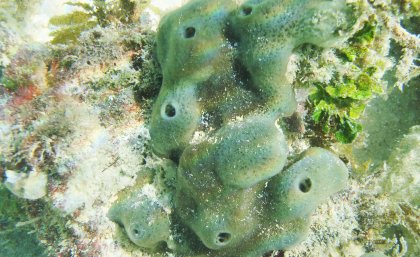Feedback archive → Feedback 2019
Were stem cell-like organisms the first forms of life?
Stem cell-like ancestors only increase complexity of early life

Travis T. inquired about a recent article, which supposedly details how multi-celled animals could have developed.1,2 Dr Matthew Cserhati (CMI-US) responds.
The experiment looks interesting, but it raises a lot of questions. A quote from the paper that you referenced: “The great-great-great-grandmother of all cells in the animal kingdom, so to speak, was probably quite similar to a stem cell.”
Stem cells are undifferentiated, meaning they are not yet specialized enough to be a brain cell, a kidney cell, or a muscle cell. Unlike these highly specialized cell types, stem cells do not have a characteristic unique shape. They have the potential to become one of many different types of cells, depending on which set of genes are active in the cell. The cellular environment, along with a slew of different combinations of extracellular signals also helps determine their fate. A stem cell is the biological equivalent of the proverbial ‘jack of all trades, but a master of none’.
Thus, stem cells must be very complex—more complex, in fact, than any of the cell types that derive from them. They have to contain the genetic information to make them capable of differentiating into dozens, or even hundreds of different cell types. You might have heard about the minimal cell problem. The minimal cell is a theoretical, free-living, single-celled organism with the smallest number of genes necessary for independent existence. According to calculations, the minimal organism must have had around 1,350 genes. Several years ago, I published a paper that calculated the probability of such a minimal organism evolving. The probability that 1,350 genes all came together in the chemical soup merely by chance is so remotely small (10–167,500) that we might as well consider it impossible.
If stem cells are genetically very complex, and if the first organism had to be stem cell-like, this would drastically reduce the probability of it evolving from random chemicals. Worse, the pattern of life does not have a ‘stepping-down’ pattern that we see when a super-complex stem cell differentiates into all the cell types that make up the body of an animal. Instead, we see a dramatic increase in cellular complexity as one looks at things like bacteria and compares them to things like people and oak trees.
I have another paper coming out in an upcoming Journal of Creation. This one demonstrates how different algae species within a ‘created kind’ can shift from a single-cell form to a multi-cellular form. The genetic background of these two species are almost identical, but the transition between the single-cell form and the multi-cellular form involves an environmental switch, which turns on a set of genes which already exist. In this case, evolution never happened, and my analysis clearly contradicts the evolutionary storytelling surrounding this supposed ‘origin of multicellularity’ claim.
I suspect this could be the case in the paper that you are referring to. The paper doesn’t discuss new genetic material responsible for multicellularity. All it does is discuss the differences in gene expression in different cell types in the sponge species that they were studying. According to the authors, the genomic foundation for cellular differentiation was already established,3 and that only changes occurred in the regulation of existing genes. Either way, the evolution of multicellularity is a very complex process, which requires a large quantity of new genetic information.
References and notes
- University of Queensland, How multi-celled animals developed: Evolutionary discovery to rewrite textbooks, ScienceDaily 12 June 2019. Return to text.
- Sogabe, S. et al., Pluripotency and the origin of animal multicellularity. Nature 2019 | doi:10.1038/s41586-019-1290-4. Return to text.
- Sebé-Pedrós, A. et al., The dynamic regulatory genome of Capsaspora and the origin of animal multicellularity, Cell 165(5):1224–1237, 2016 | doi:10.1016/j.cell.2016.03.034. Return to text.




Readers’ comments
Comments are automatically closed 14 days after publication.